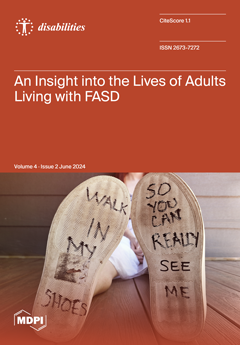There is an urgent need for valid and reliable measures of physical activity (PA) participation for use among people with physical and/or sensory disabilities. This study involved adapting the Leisure Time PA Questionnaire for People with Spinal Cord Injury for use in individuals with disabilities (i.e., the LTPAQ-D) and performing a preliminary evaluation of its content validity, construct validity, and same-day test–retest reliability in people with disabilities. User interviews assessed the content validity (
n = 5). A cross-sectional study assessed the construct validity and same-day test–retest reliability (
n = 27, 45 ± 21 years). Participants completed the LTPAQ-D, other self-report measures of aerobic and strength training PA, as well as tests of cardiorespiratory fitness (i.e., peak oxygen consumption (
O
2peak)) and muscular strength. LTPAQ-D measures of min/week of aerobic LTPA, aerobic moderate-to-vigorous PA (MVPA), and strength training shared medium-to-large correlations with other self-report measures of aerobic and strength training PA (
r = 0.458–0.942,
ps < 0.01). After controlling for age, aerobic LTPA and MVPA shared moderate partial correlations with
O
2peak (
r = 0.341 and 0.356, respectively). Min/week of strength training, measured by the LTPAQ-D, was associated with predicted maximal strength on the chest press (
r = 0.621,
p = 0.009). All LTPAQ-D measures demonstrated good-to-excellent test–retest reliability (intraclass correlations = 0.709–0.948,
ps < 0.01). This study provides preliminary evidence of the validity and reliability of the LTPAQ-D as a measure of LTPA among people with disabilities.
Full article





